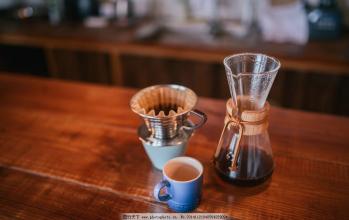Tropical Rainforest Certification of Coffee Dummson treatment Plant in Honduras
Tropical Rainforest Certification of Coffee Dummson treatment Plant in Honduras
Honduras coffee has always maintained high quality, and its price is the most competitive in Central American countries. Small, round, light bluish green coffee, mild sour, full and slightly sweet, suitable for mixed coffee or single coffee, suitable for medium to deep roasting, mainly exported to the United States, Germany and Japan. Honduras is already the largest coffee producer in Central America, and its production has been increasing in recent years. Due to high international coffee prices in 2012, the output of coffee in this year exceeded 5 million bags in 2010, resulting in a great increase in production and continuous improvement in quality.
The granules of coffee beans in Honduras are large in shape, uniform in size and glossy in color. In order to facilitate harvesting, farmers will prune the coffee trees to no more than 150 centimeters, because if they grow too high, they must set up ladders to pick, which is not only time-consuming, but also may damage the trees by bending branches.
The granules of coffee beans in Honduras are large in shape, uniform in size and glossy in color. In order to facilitate harvesting, farmers will prune the coffee trees to no more than 150 centimeters, because if they grow too high, they have to set up ladders to pick, which is not only time-consuming, but also may damage the trees by bending branches. Because the ripening period of each fruit of coffee beans is different.
There are six main coffee producing areas in Honduras, including Santa Barbara, Copan, Ocotepeque, Lempira, La Paz and El Paraiso in the southeast. Honduran coffee tastes less acidic, while caramel is more sweet.
The taste of coffee from these five different producing areas is also slightly different, some slightly sour, some have a unique flavor. Its quality is not bad at present, but because it is still promoting its popularity, the price of coffee in the country is actually quite competitive.

Important Notice :
前街咖啡 FrontStreet Coffee has moved to new addredd:
FrontStreet Coffee Address: 315,Donghua East Road,GuangZhou
Tel:020 38364473
- Prev

Coffee raw bean variety name bourbon kadui Kaduai
The name of "Typica" iron pickup truck sounds majestic and powerful, but in fact it is not so strong. It has a weak physique, poor disease resistance, easy to catch rust leaf disease, and produces less fruit. It is one of the oldest native varieties in Ethiopia, and many Arabica are derived from iron pickups! The parietal leaf of the iron pickup is bronzed, and the bean grain is large, pointed, oval or thin. everybody
- Next

Flavor description of Brazilian Red Bourbon Coffee Bean A brief introduction to the production area of grinding scale by taste treatment
Description of the flavor of Brazilian red bourbon coffee beans A brief introduction to the production area of grinding scale for Brazilian red bourbon coffee there are no particular advantages for Brazilian bourbon Santos coffee, but there are no obvious shortcomings. this kind of coffee has a mild and smooth taste, low acidity, moderate mellow and light sweetness. All these soft flavors are mixed together, and if you want to distinguish them one by one, it's right
Related
- Detailed explanation of Jadeite planting Land in Panamanian Jadeite Manor introduction to the grading system of Jadeite competitive bidding, Red bid, Green bid and Rose Summer
- Story of Coffee planting in Brenka region of Costa Rica Stonehenge Manor anaerobic heavy honey treatment of flavor mouth
- What's on the barrel of Blue Mountain Coffee beans?
- Can American coffee also pull flowers? How to use hot American style to pull out a good-looking pattern?
- Can you make a cold extract with coffee beans? What is the right proportion for cold-extracted coffee formula?
- Indonesian PWN Gold Mandrine Coffee Origin Features Flavor How to Chong? Mandolin coffee is American.
- A brief introduction to the flavor characteristics of Brazilian yellow bourbon coffee beans
- What is the effect of different water quality on the flavor of cold-extracted coffee? What kind of water is best for brewing coffee?
- Why do you think of Rose Summer whenever you mention Panamanian coffee?
- Introduction to the characteristics of authentic blue mountain coffee bean producing areas? What is the CIB Coffee Authority in Jamaica?

